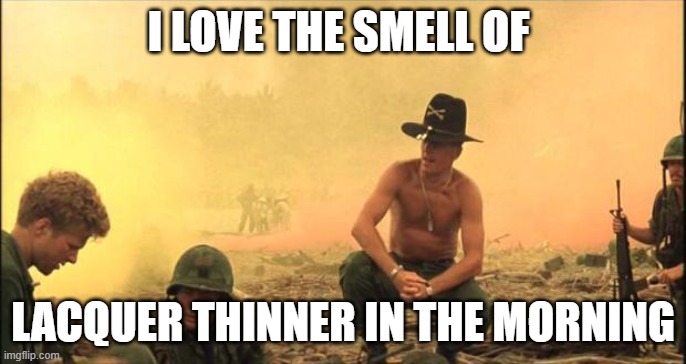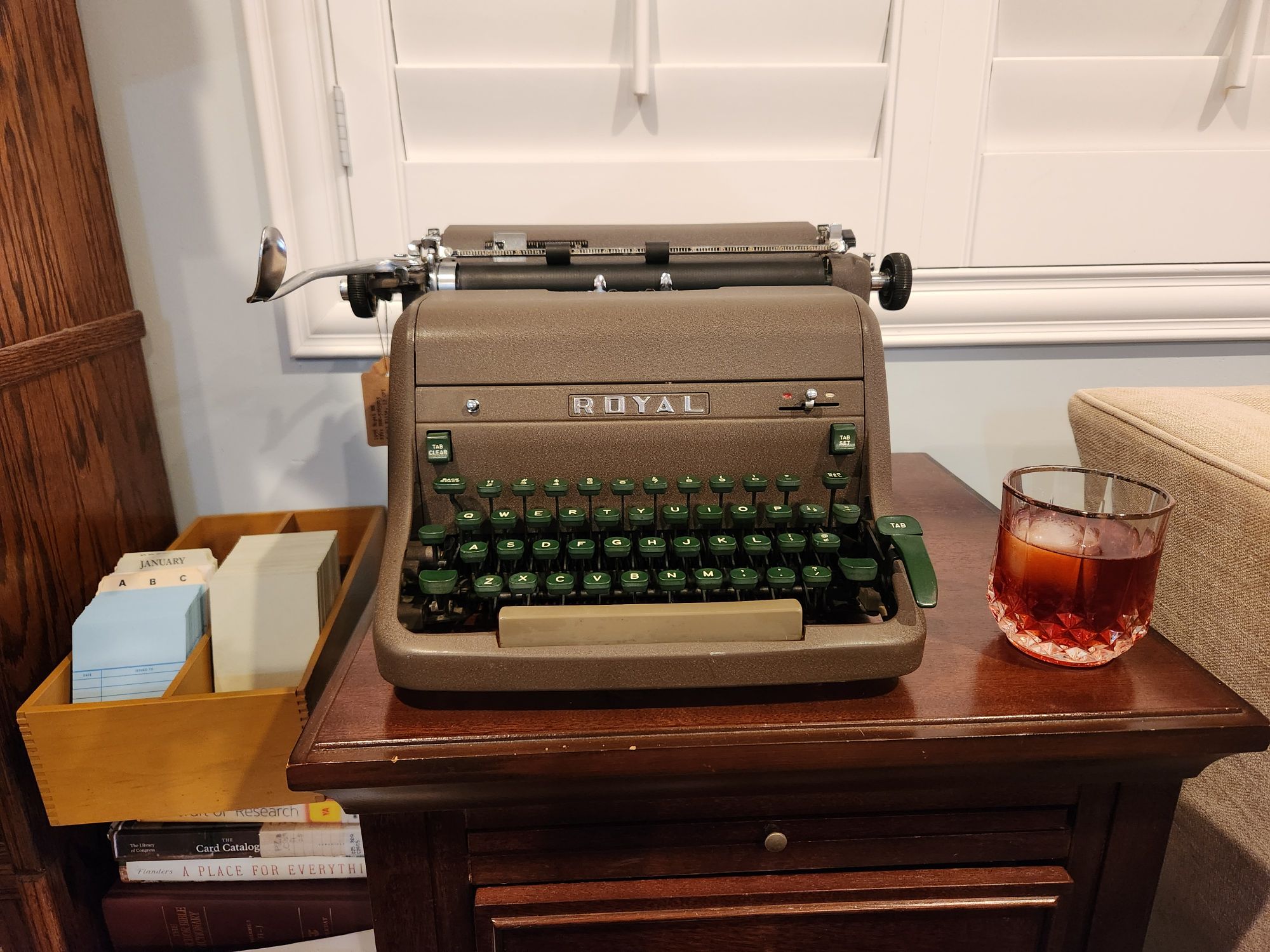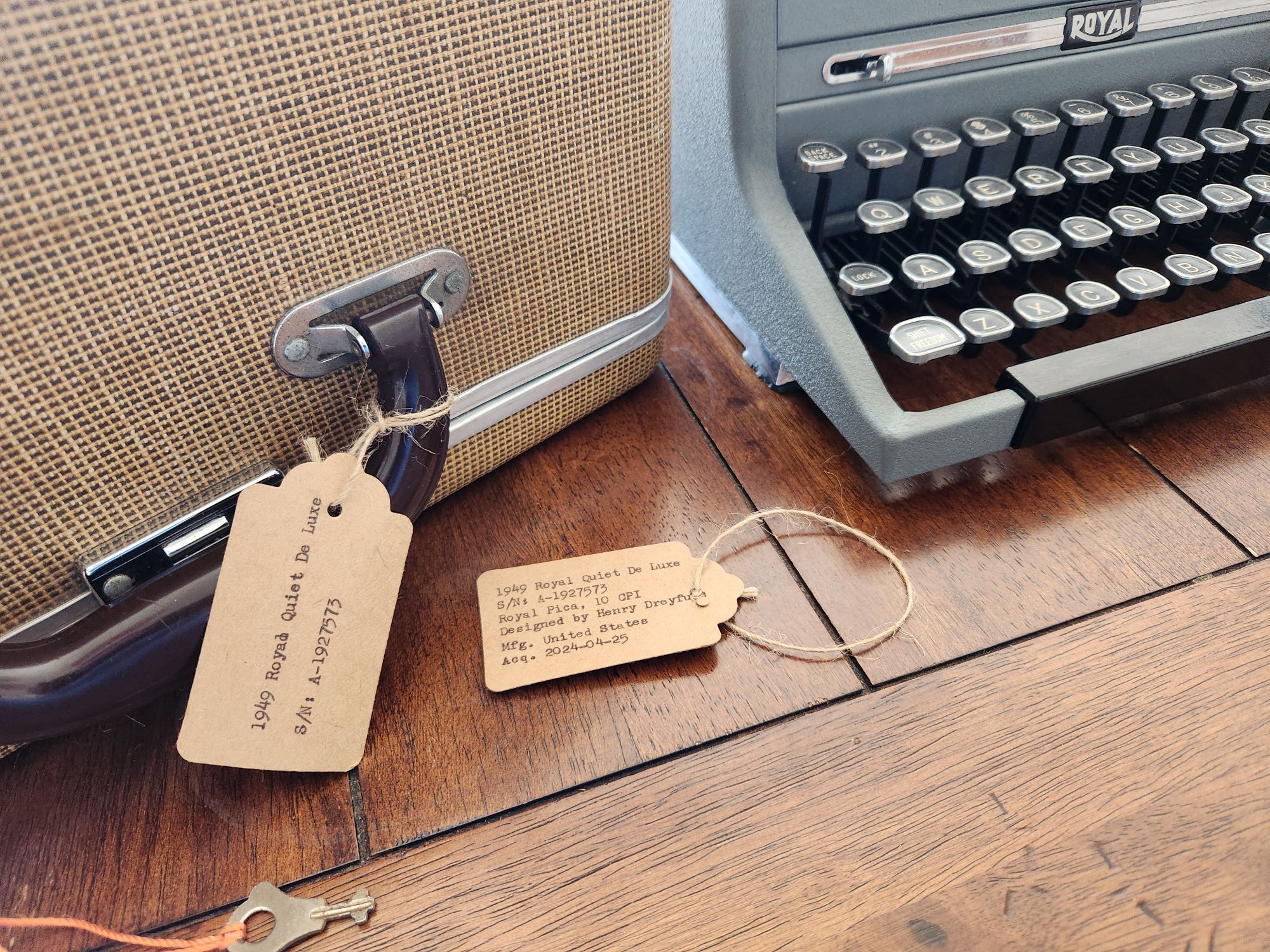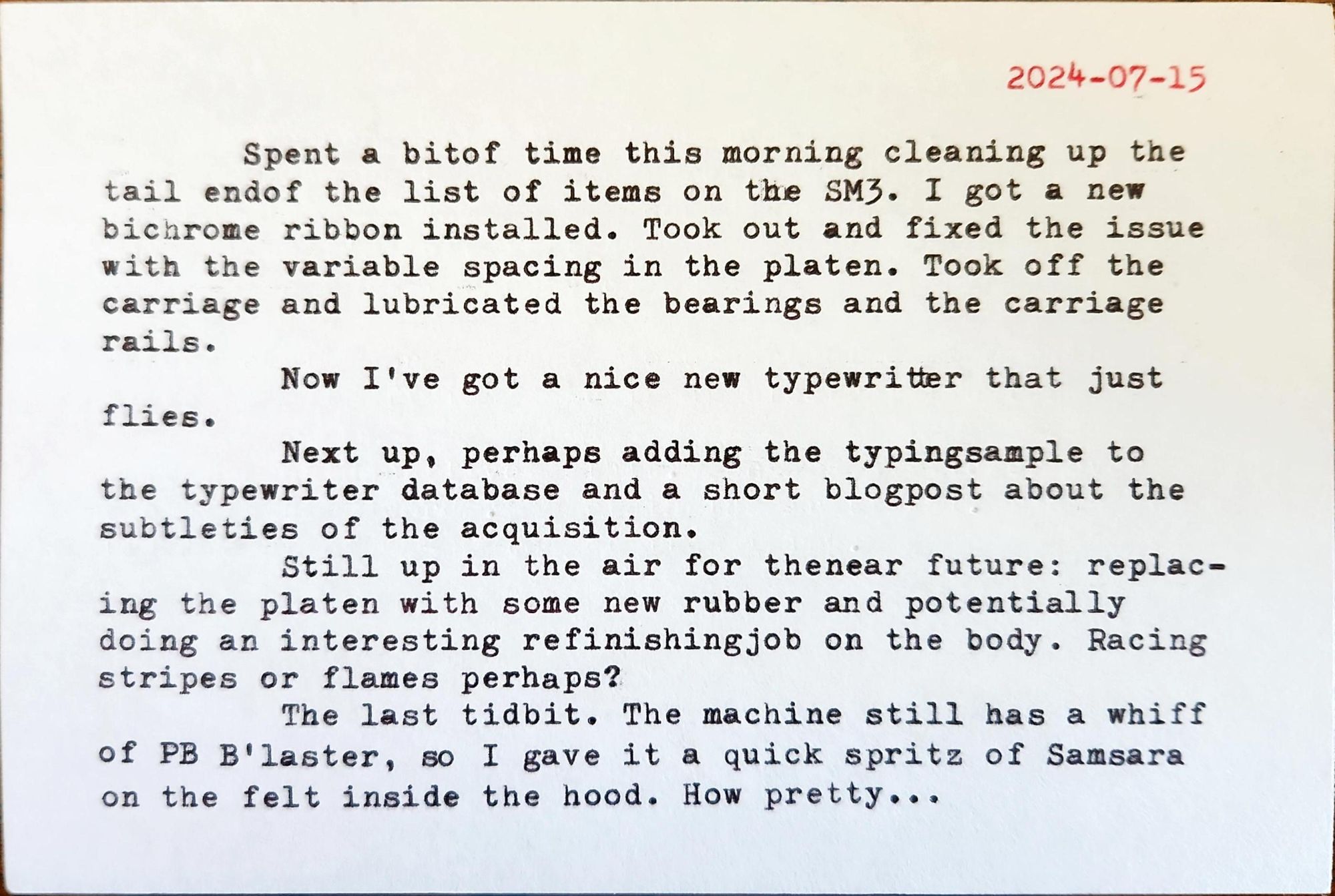It was a Weimar era Orga typewriter which looked surprisingly like the 1/2 typewriter Orga Modell 10 (1947) which appears in the movie Willy Wonka and the Chocolate Factory (Paramount Pictures, 1971). These typewriters were manufactured in Germany from 1923-1950 and some were distributed in Britain, typically under the brand name A.M.C. Given that the film was shot primarily in Germany, this shouldn’t be too surprising.
I’ve yet to see an Orga for sale in the United States much less a Modell 10. Buying and shipping any Orga from Europe is generally quite expensive, and I wouldn’t trust that it would arrive intact. This one was a short drive from me at a fantastic price, so naturally I couldn’t pass it up. It appears to be an older Orga-Privat Model 5 (circa 1928-1933) which is labeled in English as a “New Orga”. (It also reminds me a bit of Francis Bacon’s Novum Organum too.) Rather than the typical German QWERTZ keyboard, this one has an English QWERTY keyboard and appears to be in great condition. Sadly it won’t come with the original case. From what I can see in the typewriter database, it’s one of the few that has English badging with the name Orga on it. This leads me to believe that it was originally sold in the British market, so it could easily have been the sort of machine that Grandpa Joe might have used.
I’ll be able to pick it up later this week and can’t wait to clean it up. The tougher portion: how to cut it precisely in half!?
















